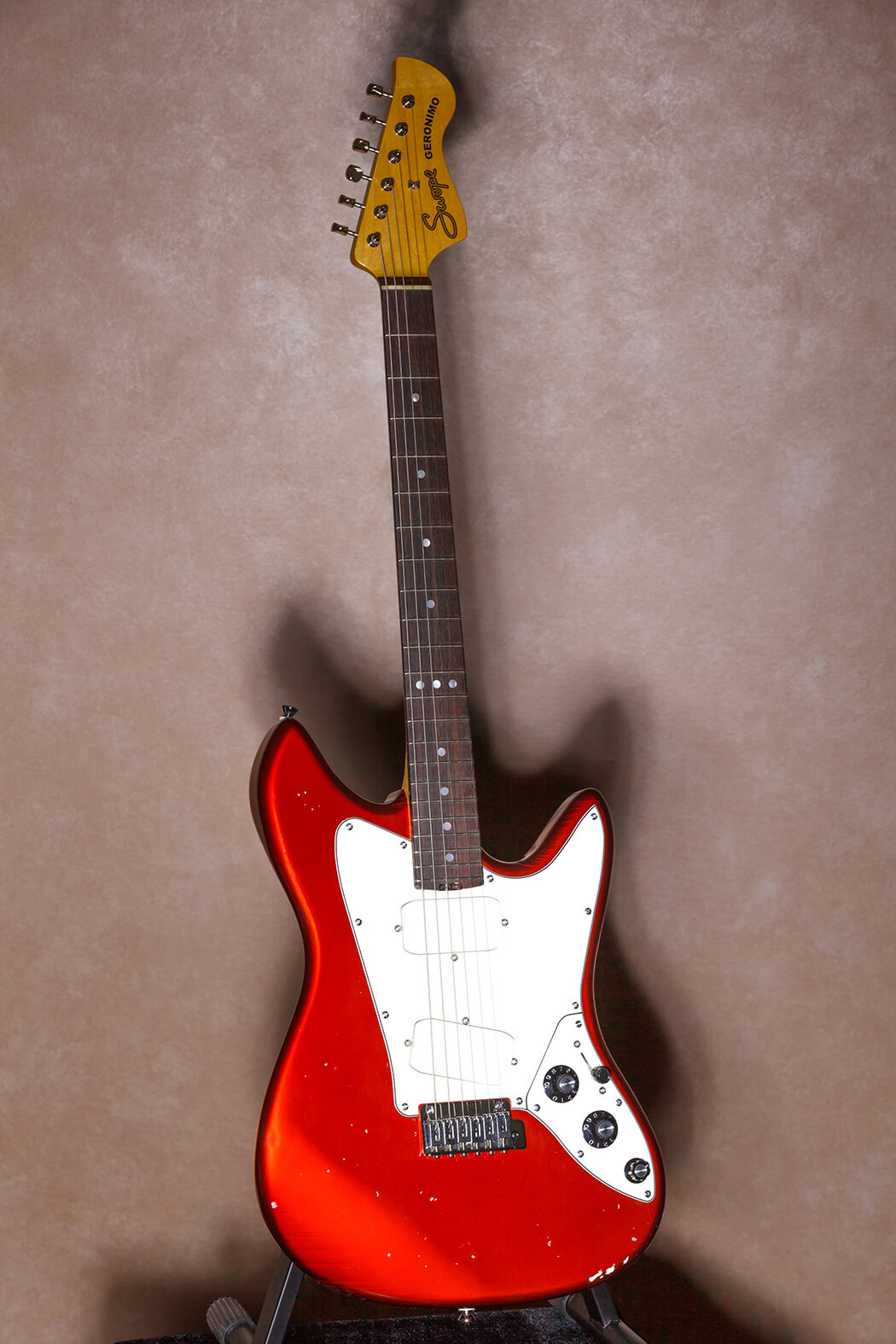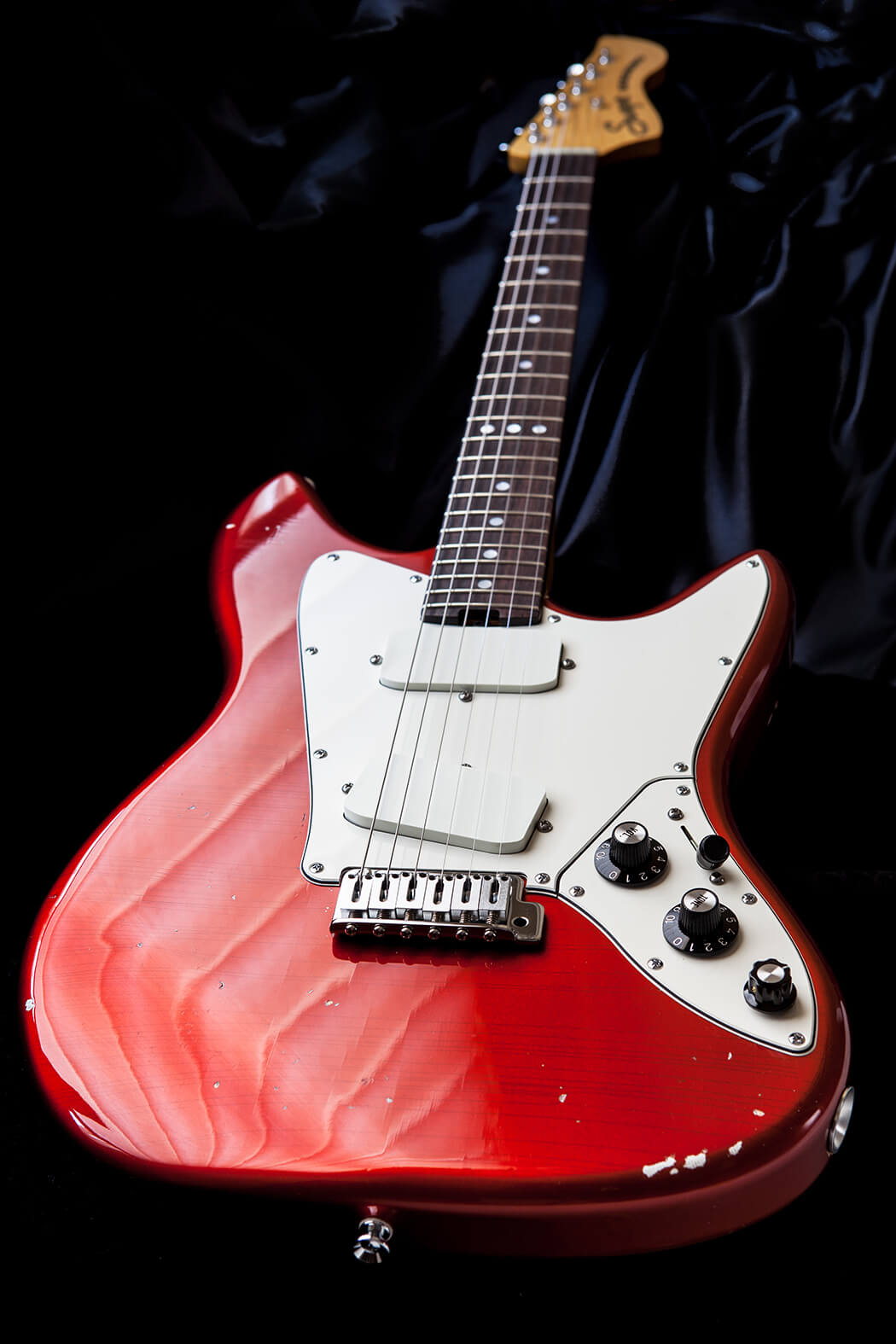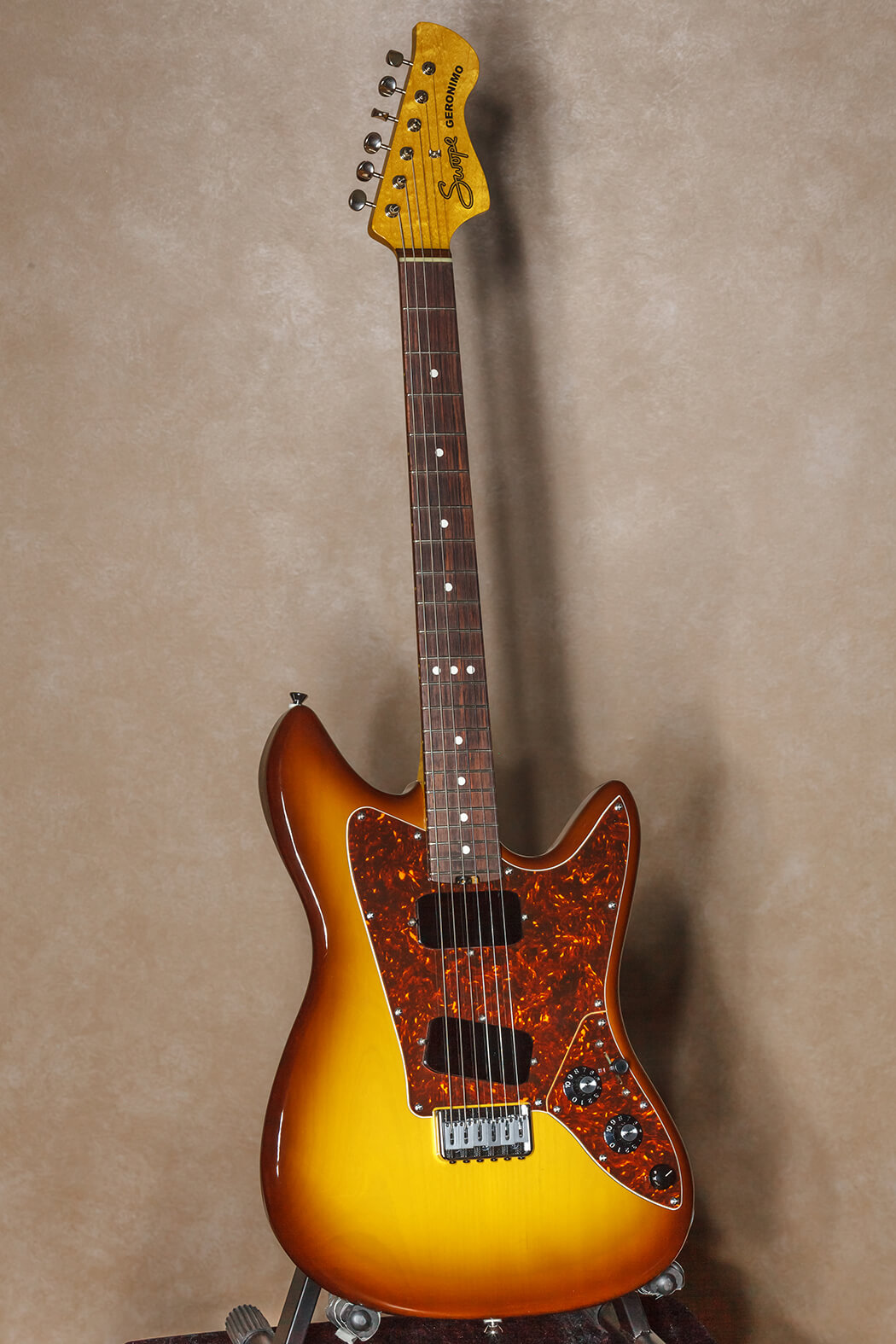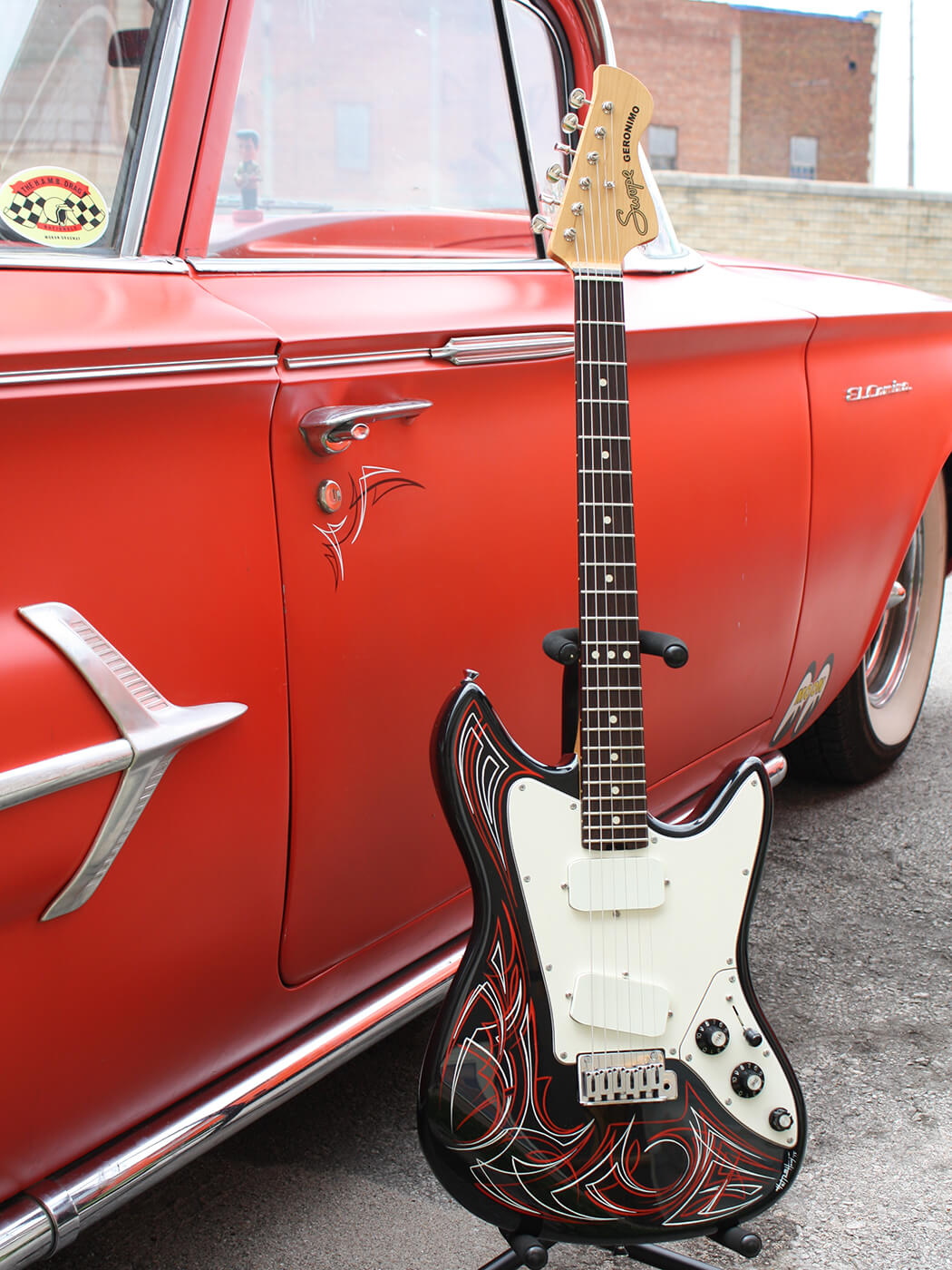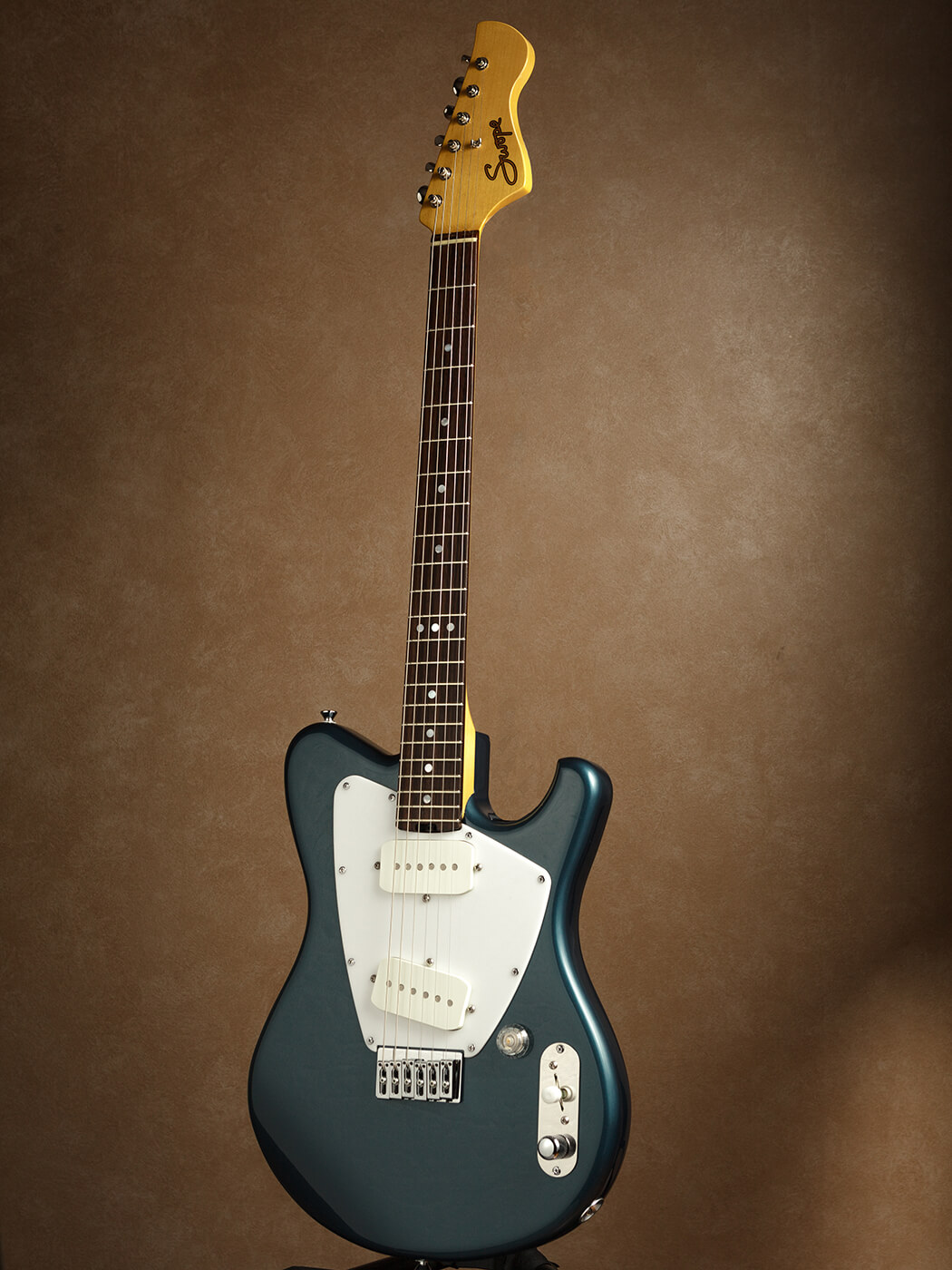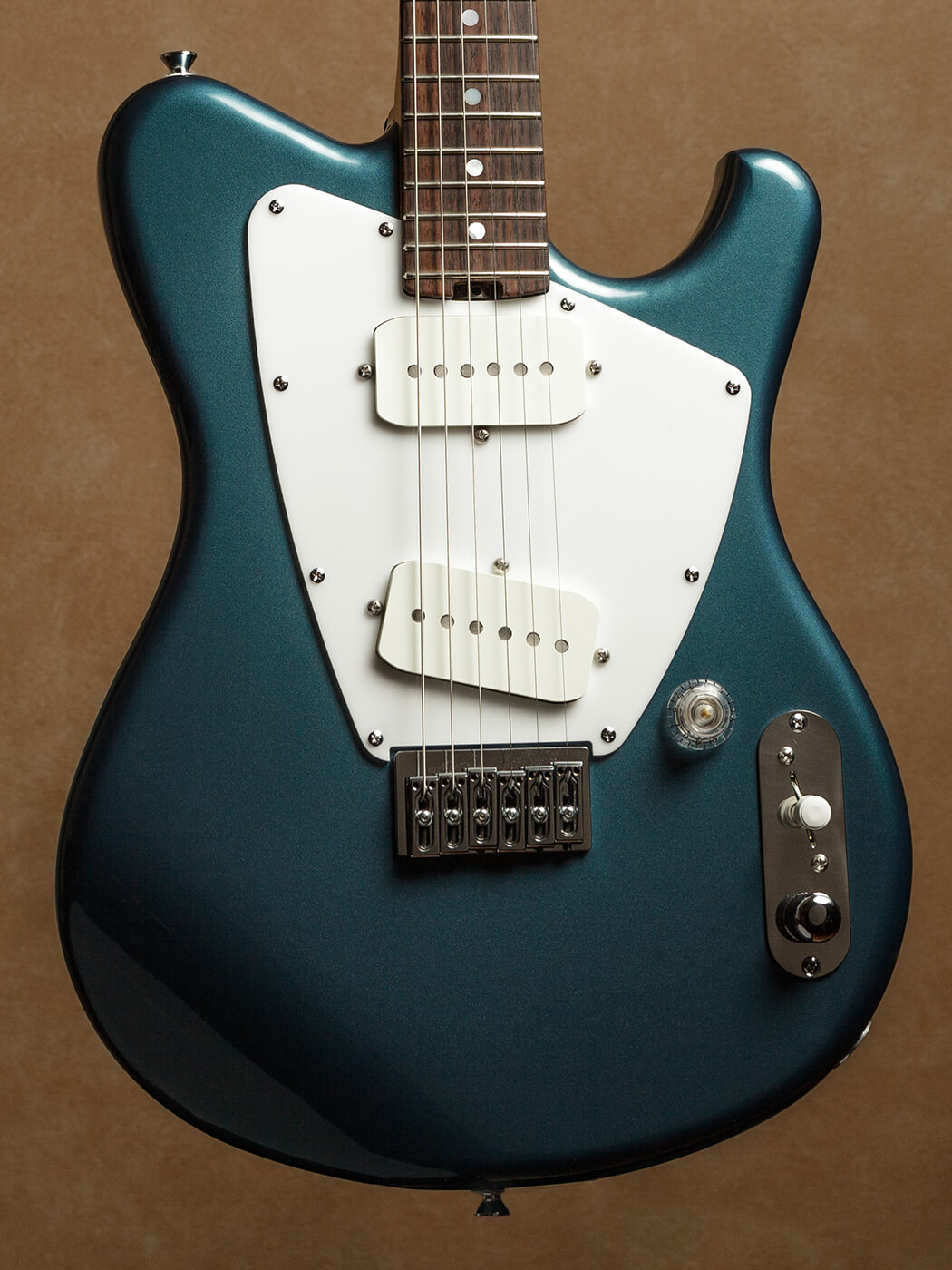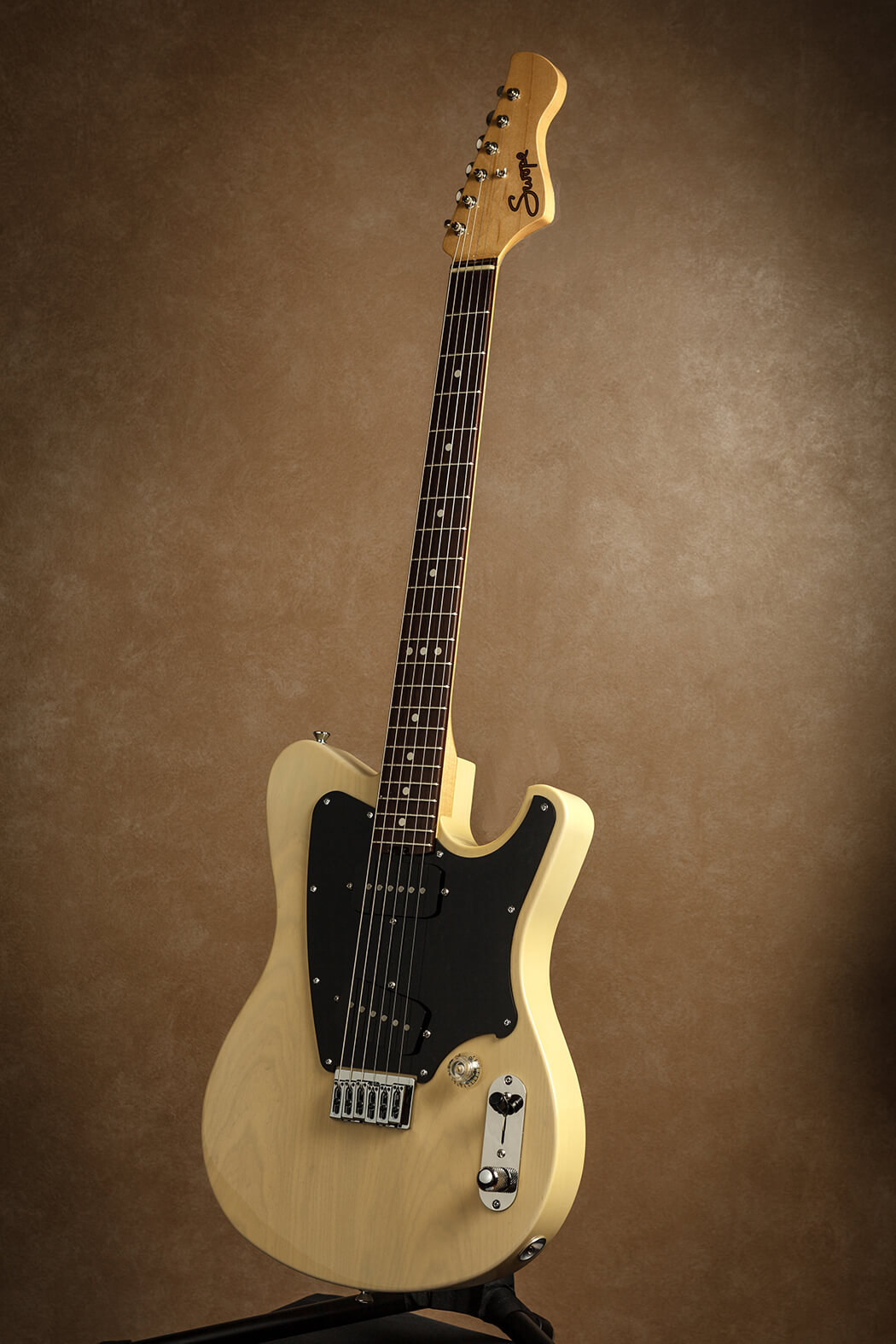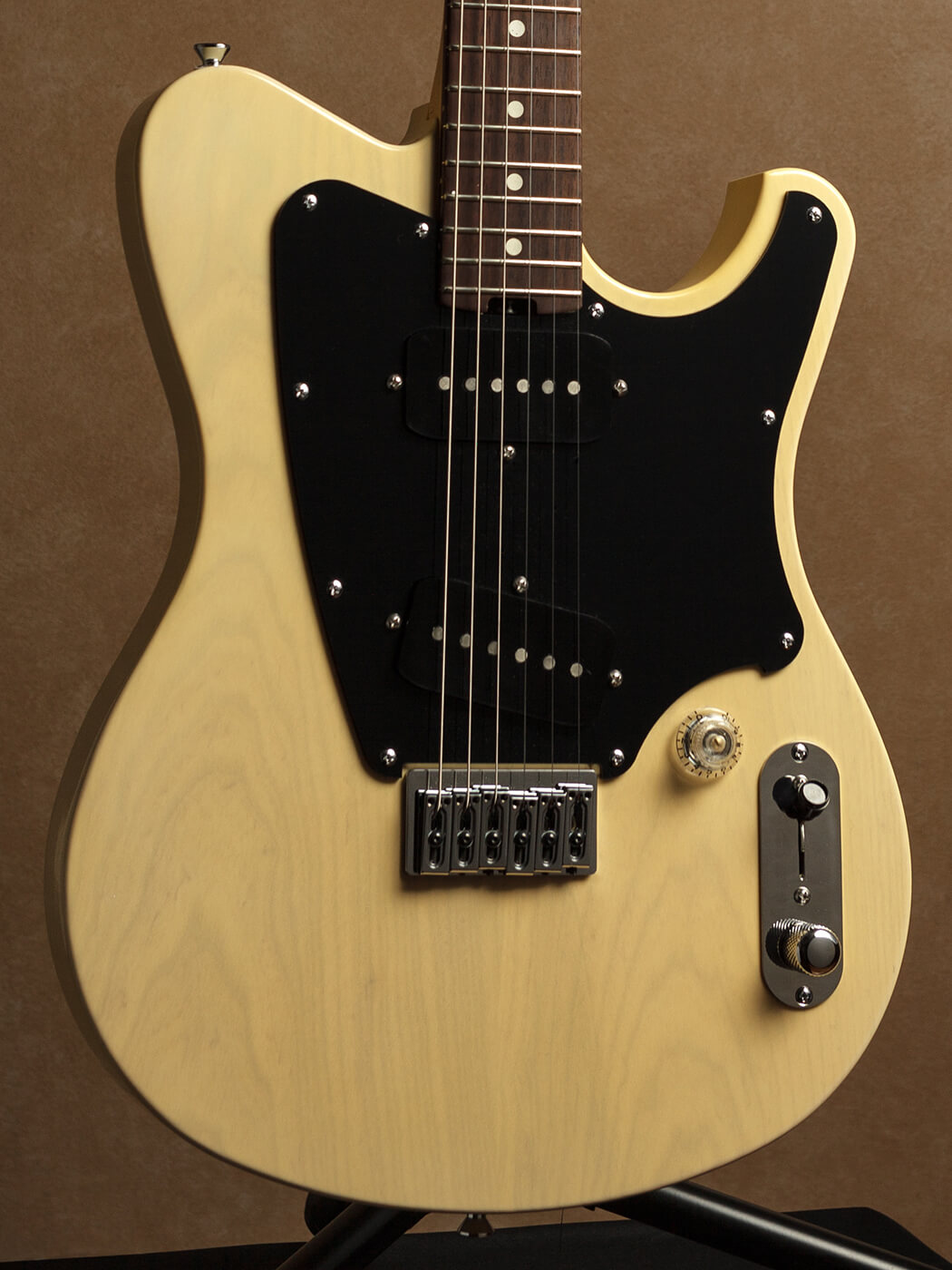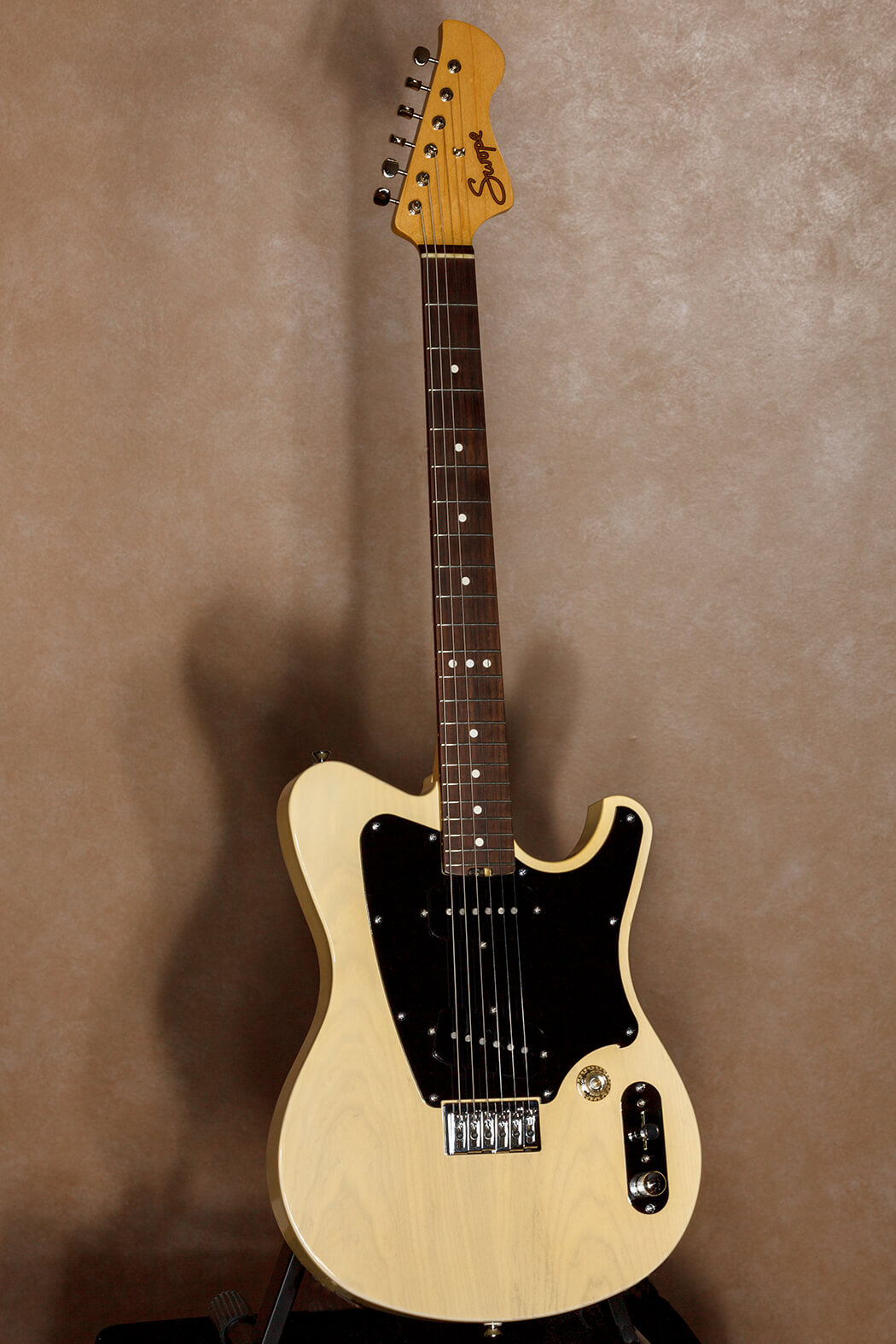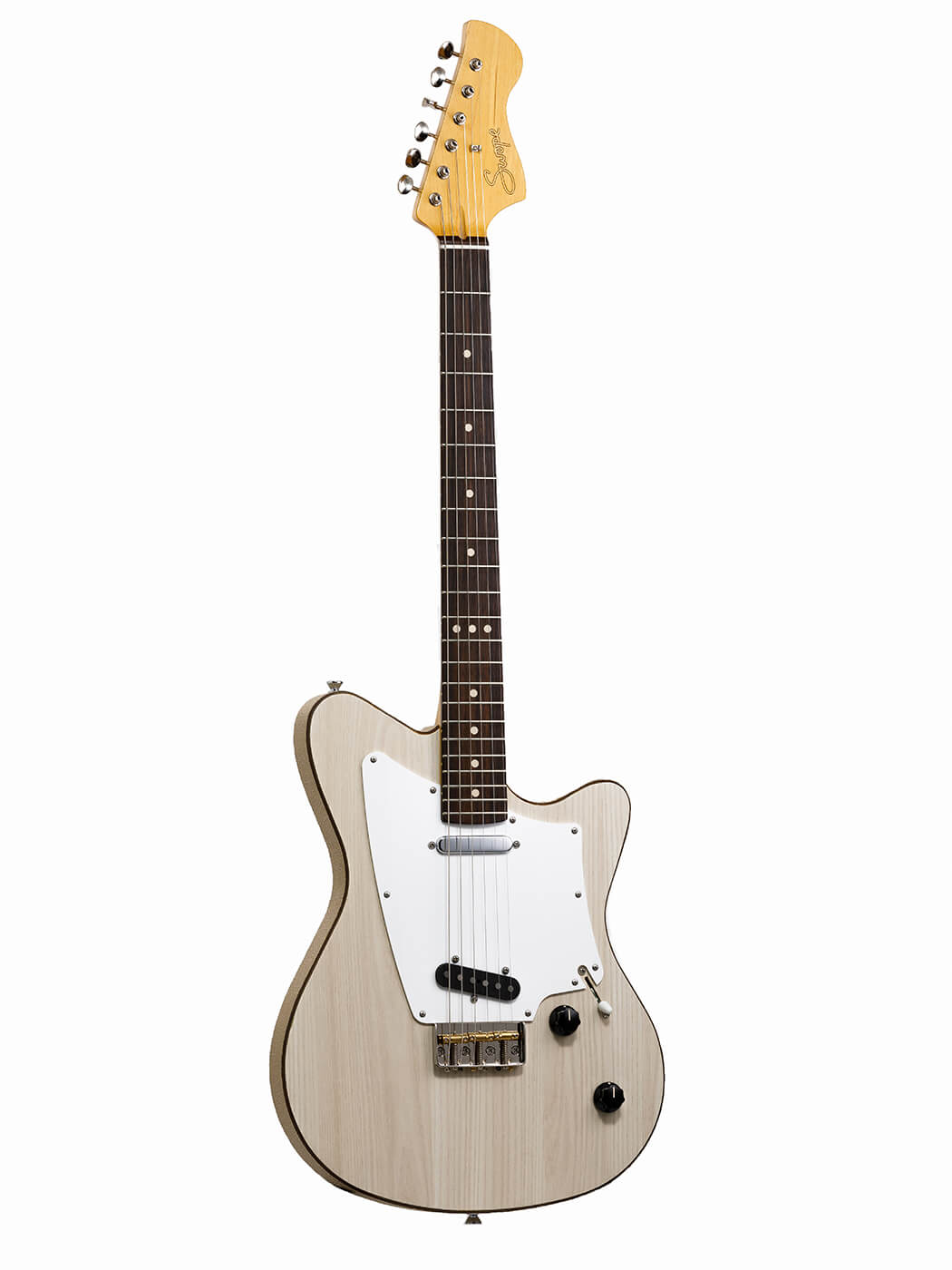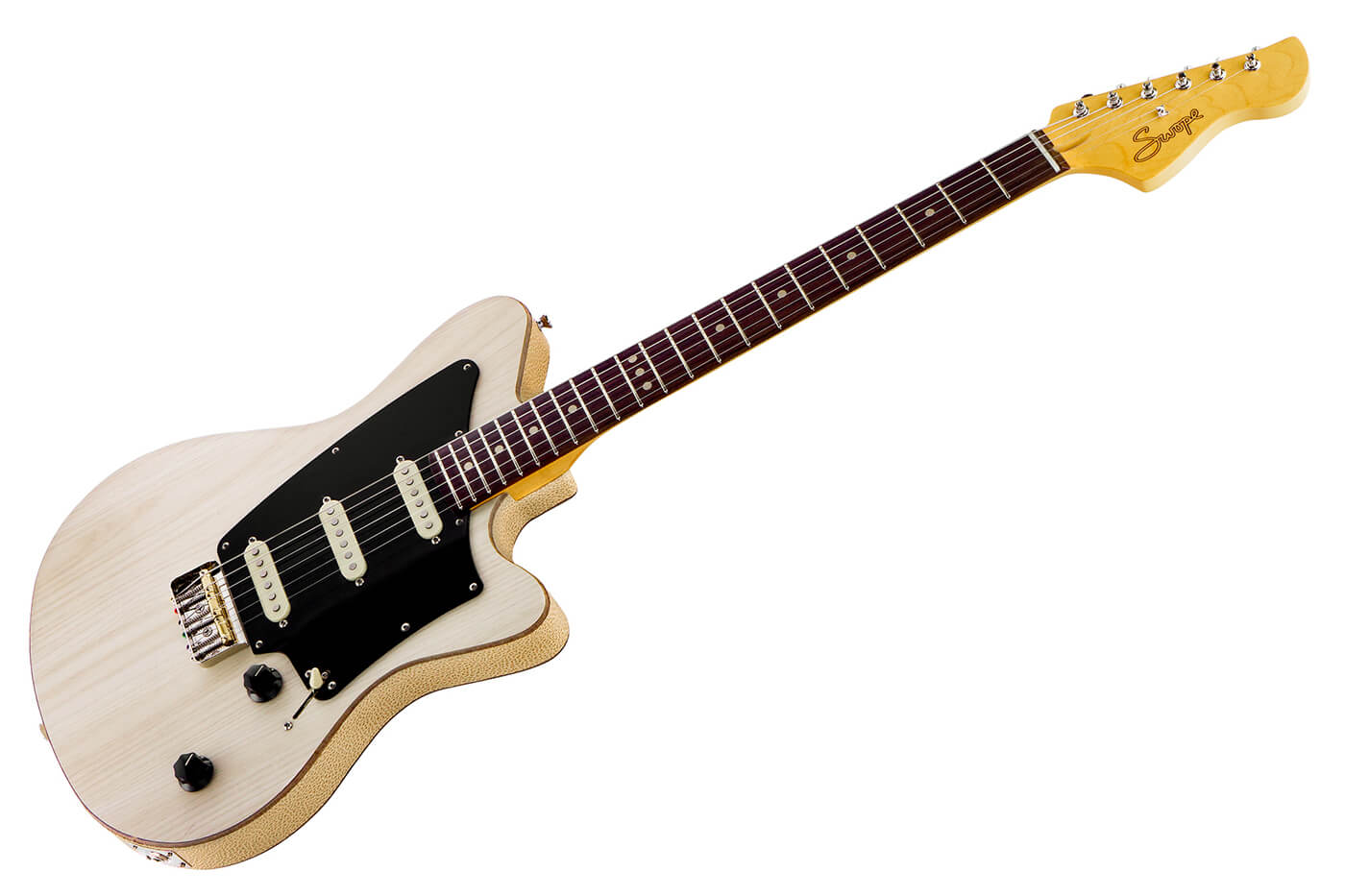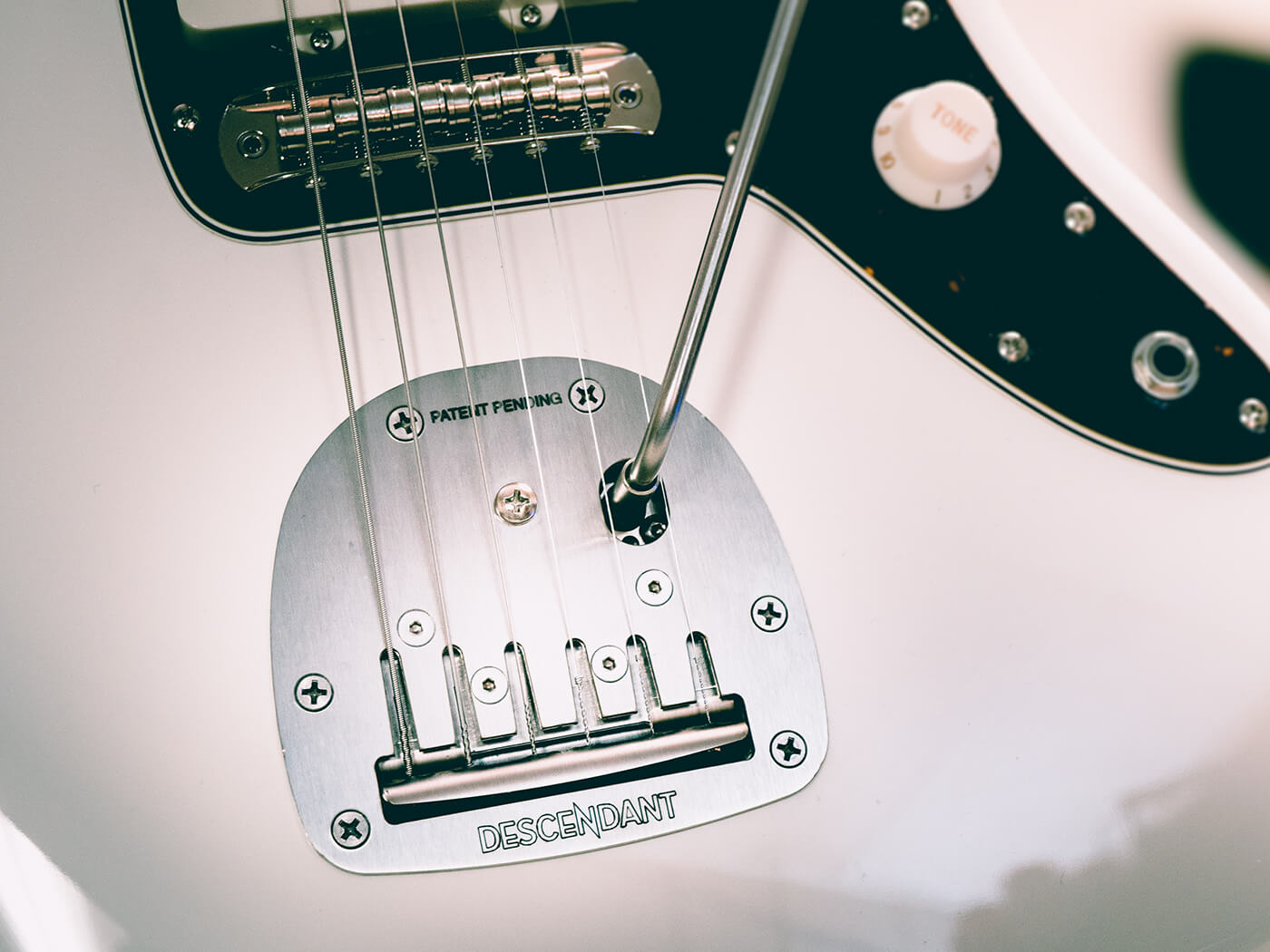Related Tags
Meet Chris Swope, head honcho of innovative boutique brand, Swope Guitars
Find out about how he got started in the business and what frustrates him about the boutique market.

The solo luthier’s lot is not an easy one. Despite the wealth of experience and skill backing him up, Chris Swope finds he’s always scrambling for the next angle that will help keep it all above water. Even with guitars in the hands of a Rolling Stone, John Oates, Nashville ace Kenny Vaughan, Webb Wilder, Jimi Hazel, and a host of others, a humble craftsman needs to think business as well as art, and Swope has pursued a flurry of ideas to keep body and neck together.
In addition to his custom-grade guitars, a new entry-level line is just hitting the wall hangers, and an independent range of pickups could soon tickle the fancy of the after-market crowd. Meanwhile, Swope feels his new patent-pending redesign of an in-demand yet six-decades-old piece of hardware could be the thing that really pushes him over the top. Alongside all of this, Chris Swope has guitar-making chops to rival just about anyone on the boutique scene, but he started down this road much like so many of us who have been bitten by the bug.
“I was born not far from where I am right now,” he tells us, “in Kansas City, Missouri. I am 52, so I literally came of age in the 80s. And the 80s, for me, covered junior-high to college-graduate. I was a total Beatles freak as a grade schooler, and George Harrison was my man. But I moved on. When Lennon was shot it was too sad for an 8th grade boy to listen to The Beatles for a long time, and I immediately turned to Led Zeppelin.”
Big Apple bound
Upon graduating from high school, Swope headed to the University of Kansas in Lawrence, Kansas, but the call of the guitar was too much to resist for long. Student digs behind the legendary Mass Street Music in Lawrence, run by proprietor and pre-war Martin aficionado Jim Baggett (a frequent guest on PBS’s Antiques Roadshow back in the day), provided ample opportunity to re-charge between classes, and eventually for Swope gain his first significant hands-on experience in guitar-craft.
“I hung around there enough that he was like, ‘Just go up to the shop! If you’re not buying anything you might as well do something to help.’ So that’s how I got my start, because I never had any money, so it was all about learning how to make something that was not-great, better.”
After college, Swope followed his wife to New York City and found a job working for legendary guitar and bass maker Roger Sadowsky, where he became more thoroughly grounded in just about every aspect of electric luthiery. And not only that, but Sadowsky was the kind of mentor who was happy to cultivate abilities that might one day help his mentee fly the coop.

“Roger was so super cool,” Swope recalls. “‘Here’s the keys to the shop, come in and work on your own stuff whenever you want.’ We were right around the corner from 48th Street. When Roger had to move to Brooklyn in 2002 because the building kicked everyone out, I’d been [at his Manhattan location] a long time and I could walk to work.
“I didn’t want to take three trains to get over there, an hour commuting each way. And he was giving up the repair business because he didn’t think people from Manhattan were going to schlep over there, so I decided to see how the big boys are. Maybe I needed to move to Nashville.”
Nashville skyline
Swope didn’t have a gig to go to in Nashville, but had amassed a skillset that would likely land him something in the city well known as Guitar Town, USA. Being “in Roger’s shop on evenings and Saturdays, I built my first Geronimo,” he recalls: it was the guitar that would become both his debut and flagship model.
After interviews with both Tim Shaw at Fender and the head of Gibson’s Custom shop in Nashville, Swope took a job at the latter and made the jump. At first, however, it was a major shock to the system.

“I equate Roger Sadowsky with Fezziwig,” says Swope, “that character that Scrooge worked for when he was a young man, and he was just the best boss ever and would throw these big parties and love everyone. I really did have that relationship with Roger. And, I’m serious, man, I walked into Custom Shop the day I started and within 30 seconds I was thinking ‘What have I gotten myself into?’
“I’m so glad I did it, and I learned so much. You know, when you’re in the boutique world nothing leaves your bench until it’s perfect, and it doesn’t matter how long it takes. But Gibson Custom Shop, I had imagined, was a bunch of Jepettos at their benches doing works of art – but it’s a factory, you know? It’s a factory.”
At Gibson Custom, Swope started out in the Pro Shop, which his boss Ernie King referred to as ‘the cavalry’. There, the special projects, repairs of unusual or vintage Gibson guitars, dealer exclusives, and one-offs that came through via the Custom Direct Program that was still thriving at that time all combined to make the work interesting. Even so, this was still a big company, and there were those all-hands-on-deck moments when Swope would be called in to help look after the bottom line.

“Come 1:30 they’d be like, ‘Oh, they’re down a man in hand-sanding and they haven’t hit their number. Slater, you go to hand-sanding. We need somebody in finals! Somebody in fingerboard prep!’ You got thrown into every capacity, so you learned the whole thing. That was invaluable.
“I still messed around with Geronimo, and I built another one the following year. But then I got a gig in the engineering department at Custom Shop, and I was like, ‘This is what I want! This is pretty dream-scenario. Let me just put my nose to the grindstone here and maybe I can carve something out.’ See, all I ever wanted was just one photo of a guitar in a Tony Bacon book. I mean, come on, it’s not that much to ask [laughs].”
Going it alone
After six years with Gibson Custom, Swope transitioned from big to bigger when he was offered a job with Musician’s Friend’s Private Reserve division. Given the company’s warehouse – which was also the warehouse for sibling company Guitar Center – was near his home turf in Kansas City, the move provided a return to familiar territory. The job suited his needs for a time – during which, he tells us, he learned a lot about the high-end guitar scene et al, customer service, and dealing with other dealers – but after five years he was once again itching for a change.
“I was having a conversation with a guy who was kind of a mentor to me,” Swope recalls, “and I said, ‘One day I’m going to have my own shop. That’s really what I want to do. I want to try to do something on the Sadowsky scale.’ And he was like, ‘You’ve got to do it! You’ve got to do it right now!’
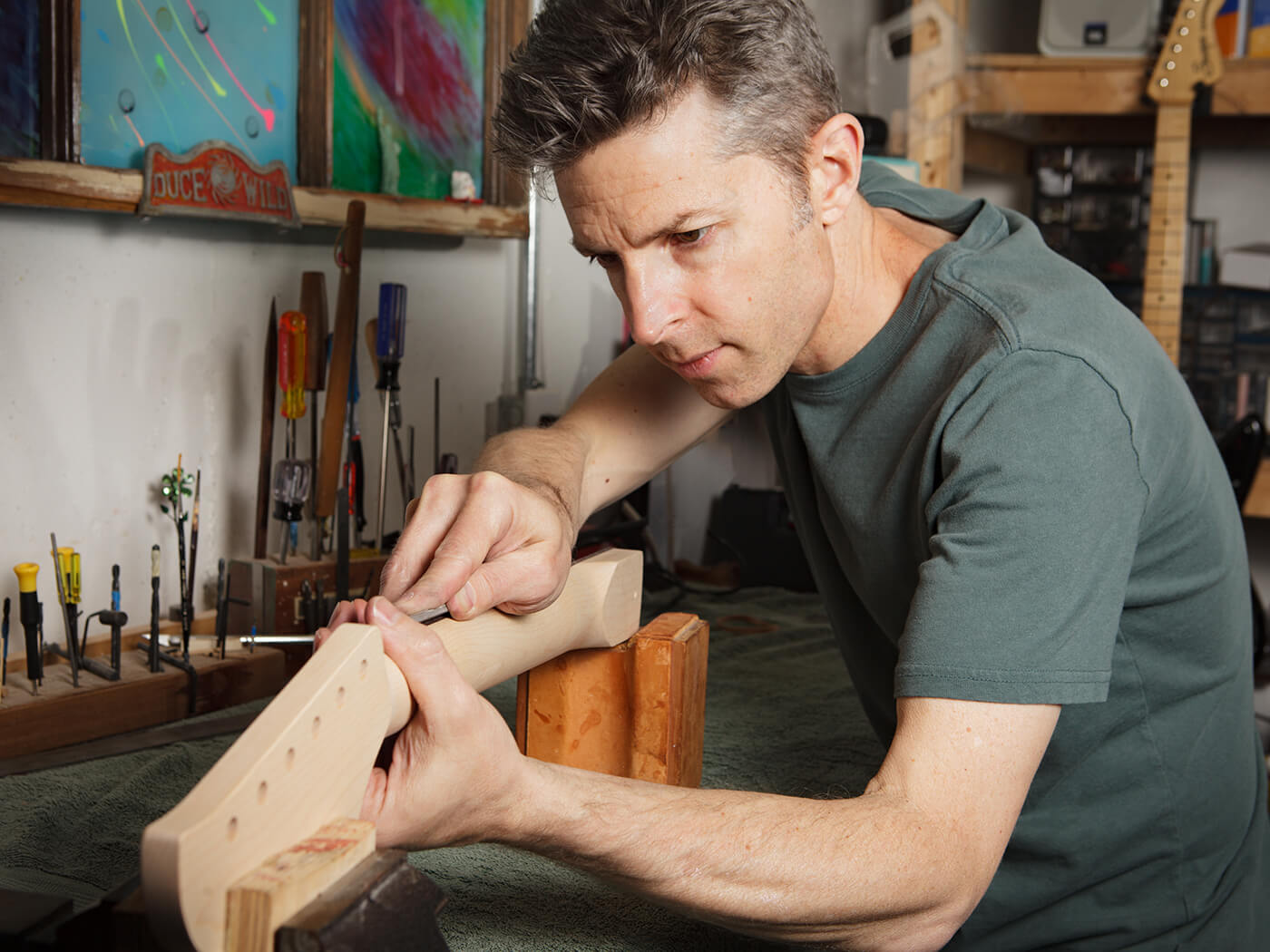
“I said, ‘You hired me for this job! How old are you?’ And he was in his late 50s or so, and he said, ‘You know, I get up in the morning, I call you, I’ve got my coffee, we’re going to start a band, it’s going to be great, and everything is clicking. By five o’clock, I just want to watch America’s Got Talent. You’ve got to do this while you have the energy, or while your kids are young enough that you can recover if you fail… You’ve got to do this!’ And he was right.”
With the Geronimo in hand, and other models in the pipeline, Swope used his industry contacts to segue into his own guitar-making business with orders on the books from day one. And while he wouldn’t call it an overnight success, some pretty big ‘gets’ came his way pretty quickly.
“I had demo guitars that I’d taken around to players. I’d accidentally sold one to John Oates of Hall & Oates, never intended that to happen – it was just like, ‘Okay, just do it!’ And I’ve been struggling ever since! Ha ha…”
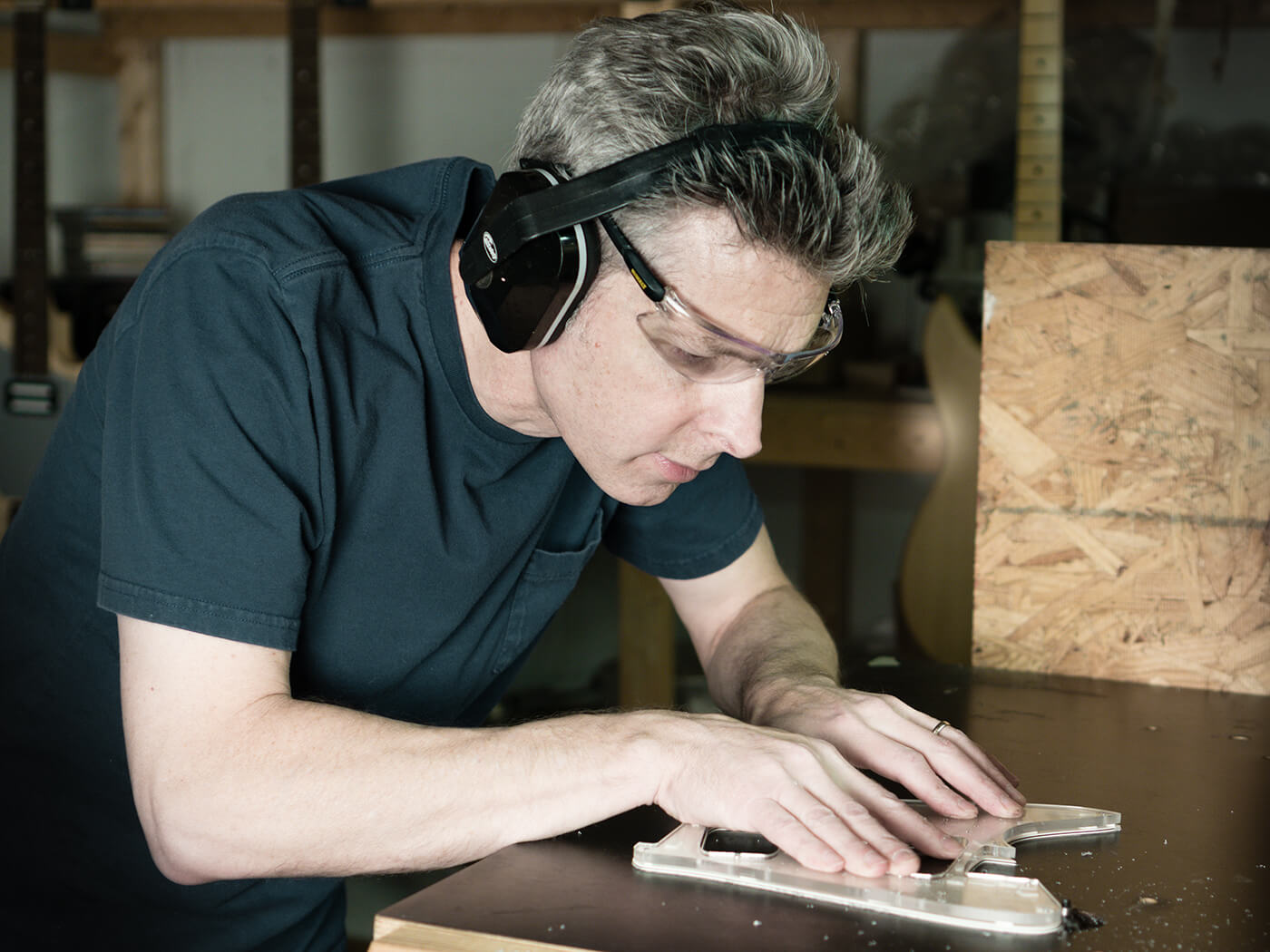
Design ethos
As one glance at the Strat-gone-Jetsons Geronimo or the retro-modern, Tele-inspired MG or GTO will tell you, Swope has had a consistent design ethos from the start, and it’s one that was honed through his earliest days in the shop with Roger Sadowsky.
“The gig at Sadowsky was 50 per cent repair,” he says, “and the coolest stuff in the world came through. Stuff I’d never heard of. And literally hundreds of vintage guitars have passed through my hands. I’m a mid-century modern guy, a 60s guy, three-button suit guy; once it gets psychedelic I kind of step back, go, ‘Okay, my time has passed.’ So that sort of Mad Men aesthetic has always been something that, since a kid, I have done.
“And, you know, the greatest electric guitars ever? There’s no question: the Les Paul, the ES-335, the Telecaster, Stratocaster. But I also love Wurlitzers and Kapa Continentals, and all that oddball stuff from the 60s. I love that they’re all inspired by what’s going on, nobody is directly copying anybody. It’s a different world. It’s like, there is no after-market, there is no third-party suppliers, but ‘We’re going to wind our own pickups! We’re going to get our own sewing-machine motor! We’re going to make our own bridges! They’re horrible, by the way, but who knows…’
“But that was kind of the idea,” he continues. “‘What if I can build a guitar that was kind of like one of those guitars that wasn’t a copy?’ Because at the time, even in 2002, [most boutique guitars] were copy guitars, the relic thing was starting. And they were like ‘so-and-so’s Telecaster and so-and-so’s Strat.’ It really has changed. Right now, there’s so much wonderful, cool-looking stuff out there.”

Pickup the pace
For all the unique and stylish design twists on guitars that otherwise generally follow the Fender bolt-neck template in wood choices and basic construction, Swope feels the place he’s really able to make his mark is in the pickup department. All Swope guitars are constructed with in-house, original-design pickups wound by Chris Swope himself. As a result, they hit the streets loaded with tones which – even while broadly familiar – you just won’t find anywhere else.
“There were those other interesting ideas at Gibson where someone was like, ‘We need a new guitar design!’ and it was always a shape. Here’s a shape! ‘What are we going to build it out of? How about mahogany! And let’s put humbuckers in it, or let’s put P-90s in it…’ But they all sounded the same. Where is the ‘close-your-eyes difference’, you know?
“That’s kind of the thing that frustrated me with looking at the boutique market. I was like, ‘What do I bring to it? How do I stand out?’ Because it’s a cut-and-paste world. ‘Let’s take an element of this guitar, and take an element of that guitar; let’s make our shape half this body half that body. And let’s buy some admittedly kick-ass pickups from this pickup maker or that pickup maker…’ I know what’s in them, and if they are set up properly they are fantastic guitars. How do I compete with that?
“So, essentially what makes mine different is the pickups, more than anything else,” he declares. “The seed for that was when I was at Gibson I had this idea of marrying a lap-steel pickup with a Les Paul. What kind of offspring would they have? Because we all know Leo Fender went from lap-steels to the Telecaster in a matter of a decade, but who made all the lap-steels before that? Gibson! Gibson had been cranking out lap-steels forever, and the first guitar boom was the lap-steel boom, people buying in exotic music from Hawaii.”
As such, Swope’s pickups have generally married inspirations from lap-steel designs with those from traditional electric Spanish guitar pickups, and have universally become the most-talked-about feature of his own guitars as a result. That, and they have successfully delivered that distinguishing factor – that ‘unique selling point’ that all marketeers chase – that any boutique guitar requires to stand out from the crowd these days.
Amid all the hype surrounding ‘hand-wound’ pickups, however, Swope declares that the essential skill in this realm is to create a great-sounding design that you can replicate consistently, ad infinitum, rather than just nail the occasional superb example through the happy accidents that most vintage pickups relied on. To that end, he says, “I’ve got a killer winder. It’s the most important piece I have, this $10,000 CNC pickup winder that I still owe money on, that allows you to create this unique wind and replicate it.”
Swope continues, elaborating: “There’s plenty of great tone in hand-wound pickups, but there’s no two that sound alike. It’s impossible. You’re just there with your hand, going like that [mimes feeding wire onto a bobbin]. The pattern, the spacing, the number of turns, all the tension, it’s all over the map. But you’ve got to be consistent. I remember for a while Fender’s sales pitch on the hand-wound stuff from the Custom Shop was, ‘Each one’s unique. You’ll find your unique voice.’ But what if I’ve spent $7,000 on a guitar and got poop?”
In addition to perfecting the pickups that go into his own guitars, the investment will enable him to introduce his own range of after-market replacements pickups in standard Telecaster and Stratocaster configurations, as well as others, a venture slated for early 2020.
Biscayne bay
However distinguished and original one’s creations might be, the boutique market is still a tough row to hoe these days, given the ratio of struggling makers to players who can afford to spend the entry fee. To that end, Swope has recently introduced a more affordable lineup, the Biscayne Series, which applies his full design and construction skills to a basic, semi-hollow, Danelectro-like range of guitars made with some more affordable components and simpler versions of his in-house pickups, coupled with solid cores and hardboard fronts and backs.
“The Biscayne is a way for me to have a guitar that players can mod,” says Swope. “They can order pickups from me, they can use pickups out of their drawer, I’ll throw in a pickguard that will direct-mount with the pickup route so they can put their DiMarzio Super Distortions in there – I don’t care – the thing with the Biscayne is you’ve got to order it with at least one of my pickups in it when you buy it. What you do beyond that is up to you. I don’t want to say ‘the whole is greater than the sum of the parts,’ because these are all awesome parts, but that is what Danelectro is to me.”
Above and beyond all of this, though, it seems what is getting Chris Swope most excited these days is his major rethink of a piece of hardware that has been around since 1958. At the time of writing, Swope has just begun selling his own redesign of the popular Fender Jazzmaster/Jaguar-style vibrato tailpiece, dubbed the Descendant. In addition to presenting a smoother, more solid feel in use, the vibrato’s design inherently improves the break-angle of the strings over the bridge, while correcting other long-standing issues with the original design.
“Oh my god,” Swope declares, “it has been ten years in the making! Two years into it, I went through the provisional patent process, and now the non-provisional process – and it will be years before I find out whether I have the patent, but for now I have a limited amount of protection and I can start selling this – and that might be the thing that I actually can make a living from.
“I don’t want to jinx it, but I really do feel that it does something that’s needed, and it’s not just for my own guitars; it’s for every guitar that has ever had a Jazzmaster-style vibrato on it. It’s gotta be hundreds of thousands of guitars. So, one way or another, I’m gonna’ get there!”
Find out more about Chris Swope’s designs at swopeguitars.com.

